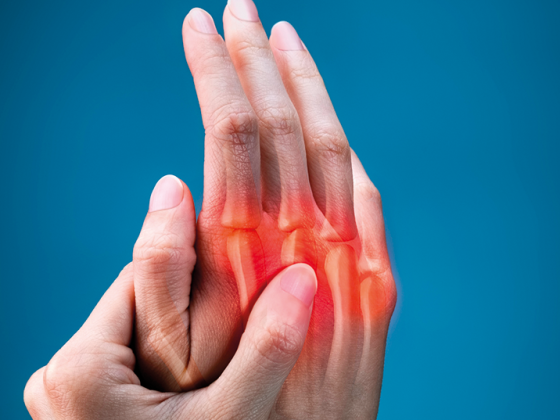This year’s online congress of the DGN was again a great success. 6700 attendees followed the live program, where 170 speakers presented their papers on site and discussed with each other. Topics ranged from the current COVID-19 situation to neuropsychology and the tension between systems medicine and precision medicine to new forms of care.
Progress in neurology is advancing rapidly. Among other things, a development towards personalized therapy and precision medicine is emerging. There is a growing understanding of how the brain works. In recent years, numerous milestones have been achieved that have significantly improved the quality of life and, in some cases, the prognosis of patients with neurological diseases. These include, for example, the first approved gene therapy for spinal muscular atrophy, deep brain stimulation to alleviate the symptoms of Parkinson’s disease, and therapeutic options for stroke (thrombolysis and thrombectomy). But that’s not all.
Parkinson’s becomes noticeable 20 years before the actual disease. These prodomi are often found on the skin, in the gastrointestinal tract, or urogenitally. But whether these early symptoms can be specifically detected was now investigated in a large cohort study [1]. It determined the exact temporal onset of gastrointestinal, urogenital, and dermatologic prodromal symptoms in 303 693 PD patients. The most common early symptoms were gastroesophageal reflux, esophageal motility disorders, and sexual dysfunction (17, 16, and 15 years before actual diagnosis). The estimated onset of each symptom was 5.5 (±3.4) years before the time at which clustering became prominent in the cohort. The earliest prodromal symptoms were related to sense of smell and taste (20.9 years before diagnosis), upper gastrointestinal tract (20.6 years), and sexual function (20.1 years). Prostate hypertrophy and dermatophytosis, a specific skin fungal disease, have also been newly identified as additional PD prodromes. While there is no cure for the disease yet, there are lifestyle factors that can positively influence the course of the disease, such as exercise and diet. Therefore, if a person knows about the diagnosis at an early stage, he or she can influence the course of the disease by a conscious lifestyle.
Alzheimer’s on the trail
It is undisputed that in the future more and more people will develop Alzheimer’s dementia in the course of their lives. Since so far only symptomatic treatments are possible, research into disease-modifying therapies is being carried out at full speed. Great hopes are pinned on monoclonal antibodies against cerebral beta-amyloid deposits. However, reduction of amyloid plaques was not shown to be equivalent to clinical efficacy. Now, positive results have been shown for the first time in a study [2]. Donanemab is a new monoclonal antibody directed exclusively against Aβ(p3-42), a pyroglutamate form of amyloid-β found only in plaques. The compound has been used in patients with early Alzheimer’s disease (and plaque detection on PET). 257 patients were randomized equally into two groups and received either donanemab or placebo intravenously every four weeks for a total of 72 weeks. The primary endpoint was change in iADRS (“Integrated Alzheimer’s Disease Rating Scale”) score after 76 weeks. Secondary outcome items included changes in the CDR-SB (“Clinical Dementia Rating Scale-Sum of Boxes”) score, the ADAS-Cog13 (“Alzheimer’s Disease Assessment Scale”) cognitive 13-item Alzheimer’s disease subscale, the ADCS-iADL (“Alzheimer’s Disease Cooperative Study-Instrumental Activities of Daily Living Inventory”), the MMSE (“Mini-Mental State Examination”), and changes in amyloid and tau deposition on PET imaging. The iADRS score was found to worsen by -10.06 in the placebo group and by only -6.86 in the donanemab group (the difference of 3.2 was significant). There was also a greater decrease in amyloid plaques with donanemab. In contrast, the results for most secondary endpoints showed no significant differences.
Personalized migraine prophylaxis
For migraine prophylaxis, the focus is currently on substances that target the migraine-triggering calcitonin gene-related peptide (CGRP), such as CGRP antibodies or CGRP receptor antagonists. The latter are so-called “small molecules”, which include the gepants (e.g. rimegepant, ubrogepant). Another atogepant could be available here in the future. In a phase III trial, adults with a migraine burden of 4-14 days per month were randomized equally into four groups in a double-blind fashion [3]. They received either oral Atogepant (at three different doses) or placebo once daily for 12 weeks. The primary endpoint was change in the mean number of monthly migraine days. Secondary endpoints included number of monthly headache days, baseline reduction of at least 50%, quality of life, and AIM-D score. The number of monthly migraine days decreased by 3.7 days in the 10 mg group, 3.9 days in the 30 mg group, 4.2 days in the 60 mg group, and 2.5 days in the placebo group. Secondary endpoints also showed an advantage over placebo (with the exception of the AIM-D score for the 10 mg dose).
In another study, 747 sufferers were treated with either 75mg rimegepant or placebo [4]. In the placebo group, the number decreased by 3.5 days, and under rimegepant by 4.3, resulting in an advantage of 0.8 days, which means only a minor prophylactic effect for the substance in migraine. So it seems that finding a causal starting point for new therapies is not enough.
Congress: DGN
Literature:
- Scott GD, Lim MM, Drake MG, et al: Onset of Skin, Gut, and Genitourinary Prodromal Parkinson’s Disease: A Study of 1.5 Million Veterans. Mov Disord 2021; 36(9): 2094-2103.
- Mintun MA, Lo AC, Duggan Evans C, et al: Donanemab in early Alzheimer’s disease. N Engl J Med 2021; 384(18): 1691-1704.
- Ailani J, Lipton RB, Goadsby PJ, et al: Atogepant for the Preventive Treatment of Migraine. N Engl J Med 2021; 385(8): 695-706.
- Croop R, Lipton RB, Kudrow D, et al: Oral rimegepant for preventive treatment of migraine: a phase 2/3, randomised, double-blind, placebo-controlled trial. Lancet 2021; 397(10268): 51-60.
InFo NEUROLOGY & PSYCHIATRY 2021; 19(6): 26 (published 1/12/21, ahead of print).











